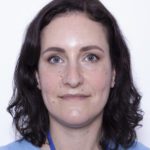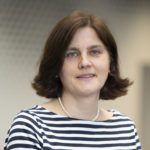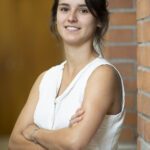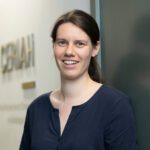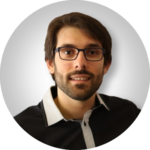The Center for Research and Innovation in Human Audiology (CERIAH) is a centre of the Institut de l’Audition, Institut Pasteur dedicated to the running of research protocols on human subjects (excluding clinical trials for drugs).
It is endowed with:
- A very complete set of cutting-edge equipment for electrophysiology and psychoacoustics, with facilities for vestibulometry, and virtual or augmented reality (e.g. through the use of spatialized sounds with visual or proprioceptive animations). The aim is to evaluate the hearing of subjects with and without hearing aids in sound environments representative of real life.
- Dedicated staff (with a hard core consisting of research audiologists, engineers, clinical research assistants (CRAs), with workshops and functions common to Institut Pasteur). The aim is to optimize the performance of the equipment, to assemble bespoke measurement chains, to standardize audiological innovations and to perform assisted or delegated data collection for investigators.
- Know-how extending from the fundamental domains of auditory neuroscience to applications in the audiovestibular management of patients, signal conception, complex sounds and sound exposure models.
An objective of sharing knowledge and contributing to the training of the audiologists of the future (practical training, training by research).
The major projects at the CERIAH
Advances in auditory neuroscience have revealed the diversity of the contexts in which hearing loss occurs: some types of hearing loss require sound amplification for correction, others require an increase in the contrast between loud and quiet sounds, and still others require an attenuation of noise. Various hearing aids are available for rehabilitation, but they are effective only if regulated to respond to the precise needs of the subject. The CERIAH aims to increase our understanding of hearing problems, with a view to developing personalized medicine. It will integrate methods of investigation (molecular methods in particular) and will ensure continual dialog with professionals in the field (healthcare practitioners and industry).
In which domains is the CERIAH active?
- Deafness linked to acute or chronic overexposure to sound. This is a problem of society in which regulations often fail to keep pace with listening habits and exposure. Levels of exposure to particular types of sound may be below the danger threshold if considered individually, but may threaten hearing if considered together (high sound levels at work and during leisure activities, ototoxic substances etc.) or in cases of individual fragility.
- Age-related deafness and its various cofactors. A better understanding of the cellular and molecular mechanisms involved, including those acting centrally, would pave the way for authentic treatments.
- The search for hidden deafness or forms of deafness for which the underlying mechanisms of pathogenesis remain poorly understood, such as sudden deafness, central deafness, Menière-type symptoms or deafness forms for which the current audiological assessment is disconcerting: an insufficient loss of auditory sensitivity to explain severe comprehension problems, for example.
What can I expect from the CERIAH?
-
I have some difficult patients that I would like to have investigated in greater detail. Send their profiles to the CERIAH. They may well fit into the framework of current or planned studies. Your difficult cases, particularly those requiring hearing aids for rehabilitation, can then be contacted with a view to their possible participation in studies, provided that they give informed consent (an RIPH or “research involving humans” protocol is not a diagnostic approach, the notions of the “patient” and of “direct benefit” being less important in this context than that of a volunteer participating in a research study).
-
How will I be informed of the protocols underway or planned at the CERIAH? The themes under development or investigation will be indicated regularly on this site. The staff of the CERIAH will also be mobilized to go out and meet professionals working in the field of deafness face-to-face.
-
Can I get involved in CERIAH protocols? Lots of practitioners in audiology have neither the time nor the means to cope with the obstacles linked to setting up an RIPH protocol. They also have too little time to collect and process the data. The staff of the CERIAH will be there to help establish and complete the dossiers in a way that certain investigators would be unable to do on their own. Upstream, the CERIAH will also assist with the compilation of dossiers for funding requests.
-
How can I transfer the knowledge gained at the CERIAH into my everyday practice? The CERIAH will pursue the translational policy of the teams constituting the Hearing Institute: when a test developed in the laboratory or on a well-characterized sample of volunteer subjects proves specific and discriminant, it may be automated, standardized and made available to practitioners. With its location at Institut Pasteur, the CERIAH will have access to platforms for the prototyping and development of instruments.
-
The “I” of the CERIAH stands for “innovation” and encompasses the notion of the effective construction of new tools applicable to clinical diagnosis.
-
How can I understand what the CERIAH does, given that it acts in the domain of advanced practices? The CERIAH will organize regular training sessions with a strong focus on audiovestibular practice. This training will evolve a great deal, based on discoveries of the cellular and molecular mechanisms underlying deafness, and the imminent development of new treatments. The training dispensed by the CERIAH will follow this progression.



